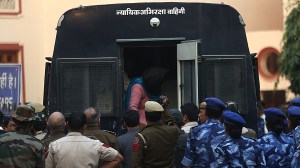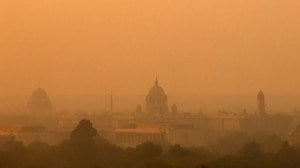WHAT THE WORLD IS READING
India makes it to the cover of The Economist, Hillary to Time’s but there’s something about China which makes the media see red.

India makes it to the cover of The Economist, Hillary to Time’s but there’s something about China which makes the media see red. Newsweek examines ‘The Rise of China’s Neocons’: “(They) argue that China should be less focused on appeasing Washington and more concerned with Beijing’s own priorities. These include resisting democracy promotion and humanitarian intervention abroad” as well as forging an EU community of nations in Asia, one led, naturally, by China. Newsweek’s worry? “The richer and more powerful China grows, the more attractive the “Chinese model” is likely to become—and the more real the threat it will pose to the liberal democratic example.”
Coincidentally, The New Republic raises the possible threat of new ‘Chinese Nationalism’, fuelled by, ironically, the Internet. Shanghai-based Mara Hvistendahl says the younger, Internet savvy generation of Chinese twenty-thirtysomethings, instead of “guiding China into better relations with the West… seem to have glanced toward the rest of the world and turned back, appalled.” This fenqing (literally, angry youth) is “critical of the government’s Japan policy and relative openness toward the West”. Hvistendahl says popular jingoistic and xenophobic web forums flourish among young Chinese and although China’s rulers are worried, “with patriotism just about the only ideological underpinning the Communist Party can still cling to, it can’t afford to quash the movement outright.”
Time finds another potentially scorching problem in ‘The Bitter Earth’. Chinese farmers, whose land has been acquired for ‘development’ are up in arms. They want their ancestral properties back and are prepared to fight for them legally and violently. The portends have a worrisome parallel with the past: “It was Mao Zedong who famously said a “single spark can light a prairie fire”… (the farmers) may not know it, but they are holding burning brands in their hands.”
The Economist features a tiger on its cover, but it’s not the diminishing species that concerns the periodical. “What is holding India back?” says India’s failure to achieve its economic potential is due to an inability to reform a “bloated” civil service: “…India’s 10m-strong civil service is the size of a small country, and its unreformed public sector is a huge barrier to two things a growing population needs… a faster rate of sustainable growth” and spreading “the fruits of a growing economy to India’s poor”. An accompanying article on the IAS says the bureacracy veers between service and self service. The Economist concludes: “The tiger may be the animal most Indians associate with their private sector; but a more apt symbol is the peepul tree… if the next government again flunks reform,” that peepul could be “smothered”.
While Hillary Clinton’s resurrection is celebrated for its true grit by everyone, the most interesting and provocative story is Tina Brown’s Hillary and the invisible women” in Newsweek. The former editor of The New Yorker, joins Clinton’s campaign in Texas and tries to understand why women love the woman everyone else — including the media— love to hate. The clue lies in Ralph Ellison’s Invisible Man: “if you are 50 and female, the novel that’s being written on your forehead every day is “Invisible Woman”. All over the country there are vigorous, independent, self-liberated boomer women” who for all their achievements, “still find themselves steadfastly dissed and ignored…for their sake alone, Sen. Hillary Rodham Clinton should not give up the fight.”



- 01
- 02
- 03
- 04
- 05




























